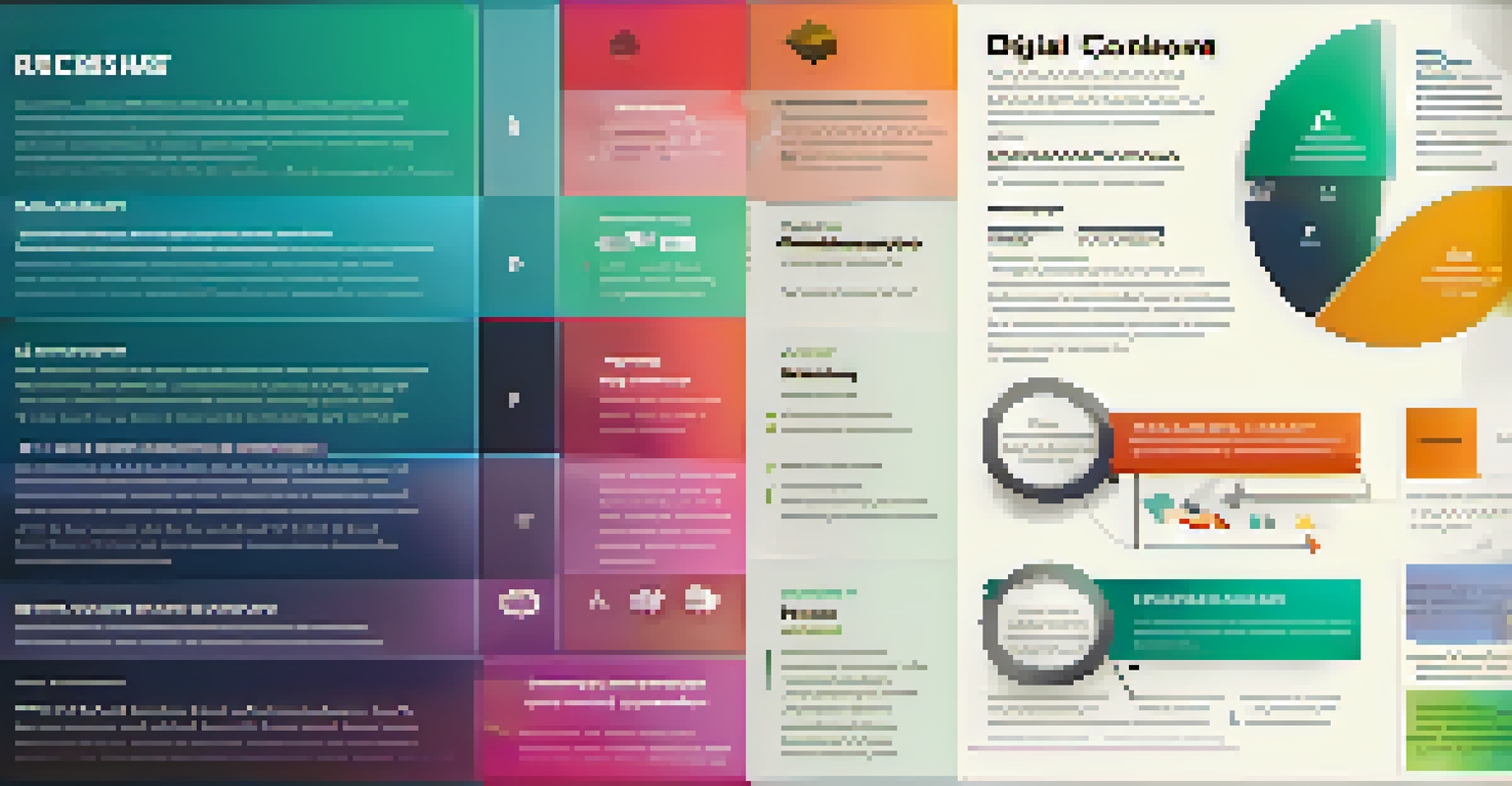Digital Portfolios: Bridging the Gap Between School and Work

What is a Digital Portfolio and Why Does It Matter?
A digital portfolio is an online collection of your work, achievements, and skills, showcasing what you can offer to potential employers. Think of it as your personal brand's website, where you can display projects, papers, or creative works. In a world that increasingly values digital presence, having a well-structured digital portfolio can set you apart.
Your portfolio is a reflection of your personal brand, showcasing not just your work but who you are.
By compiling your work in one place, you not only demonstrate your capabilities but also your ability to use technology—an essential skill in today’s job market. It’s like having a 24/7 open house where recruiters can explore your talents at their convenience. This proactive approach can significantly enhance your job prospects.
Moreover, a digital portfolio allows for continuous updates, meaning you can showcase your growth over time. Whether you're a student or a seasoned professional, this adaptability is crucial in a rapidly changing job landscape. Ultimately, it serves as a bridge, connecting your educational experiences to your career aspirations.
The Key Components of an Effective Digital Portfolio
An effective digital portfolio typically includes several key components: a resume, samples of work, case studies, and a personal statement. Your resume offers a snapshot of your qualifications, while work samples provide tangible proof of your skills. Case studies can illustrate your problem-solving abilities through real-life examples.

Additionally, including a personal statement allows you to convey who you are beyond your qualifications. This narrative can humanize your portfolio, making it more relatable to potential employers. Think of it as your elevator pitch, succinctly summarizing your journey and aspirations.
Digital Portfolios Showcase Skills
A digital portfolio is an online collection that effectively displays your work, achievements, and skills to potential employers.
Finally, remember to include contact information and links to your social media profiles or professional networks, like LinkedIn. This connectivity can facilitate networking opportunities and make it easier for employers to reach out. Each component works together to create a comprehensive picture of your professional self.
How Digital Portfolios Enhance Career Readiness
Digital portfolios help students and job seekers become more career-ready by encouraging them to reflect on their skills and achievements. When creating a portfolio, you often revisit past projects, which can reinforce what you’ve learned and highlight areas for improvement. This self-assessment can be incredibly beneficial in preparing for interviews.
In today’s job market, your ability to tell your story through your work is just as important as the work itself.
Additionally, they provide a platform to practice storytelling about your experiences. By articulating your journey through your portfolio, you’ll be better prepared to discuss your qualifications confidently during interviews. It's like rehearsing for a performance—your portfolio is the script that guides your narrative.
Employers appreciate candidates who can showcase their skills effectively. A digital portfolio not only demonstrates your abilities but also shows your initiative and readiness to engage in your career path. This proactive approach can make a lasting impression, often tipping the scales in your favor.
Best Practices for Creating a Digital Portfolio
To create a standout digital portfolio, start by choosing an intuitive platform that reflects your personal style. Whether you opt for a website builder like Wix or a more professional platform like Behance, ensure it’s user-friendly. Your portfolio should be easy to navigate, allowing visitors to find your work without any hassle.
Next, prioritize quality over quantity when it comes to showcasing your work. Select pieces that truly represent your skills and accomplishments. It's better to have a few stellar projects than a plethora of mediocre ones. Remember, quality reflects your standards.
Key Components Enhance Effectiveness
Including a resume, work samples, case studies, and a personal statement creates a comprehensive picture of your professional self.
Finally, regularly update your portfolio to keep it relevant. As you gain new experiences or skills, incorporate them into your digital portfolio. This ongoing commitment to improvement shows potential employers that you’re dedicated to your professional growth.
Leveraging Digital Portfolios for Networking Opportunities
Digital portfolios also serve as powerful tools for networking. By sharing your portfolio on social media or professional networking sites, you can reach a wider audience and connect with industry professionals. This visibility can lead to valuable connections and job opportunities.
Consider including a blog or a section for articles in your portfolio, where you can share insights related to your field. This not only showcases your expertise but also engages your audience. Think of it as a conversation starter; your thoughts might resonate with someone who could help advance your career.
Engagement is key when it comes to networking. Actively share your portfolio and participate in discussions within your professional community. The more you put yourself out there, the more likely you are to build meaningful relationships that can lead to job referrals or collaborations.
Real-World Examples of Successful Digital Portfolios
There are countless examples of individuals who have effectively used digital portfolios to launch their careers. For instance, graphic designers often showcase their creative work on platforms like Behance, where potential clients can easily view their range of styles and projects. These portfolios often lead to job offers and freelance opportunities.
Similarly, professionals in the tech field might use GitHub to display coding projects or contributions to open-source software. This not only highlights their technical skills but also demonstrates their ability to collaborate with others. Such portfolios can make a strong impression on employers looking for specific skill sets.
Networking Boosts Career Opportunities
Sharing your digital portfolio on social media and professional sites can expand your network and lead to valuable job connections.
Even educators are embracing digital portfolios to demonstrate their teaching philosophies and student engagement strategies. By sharing lesson plans and student work, they can present a comprehensive view of their capabilities. This practice is becoming increasingly popular as schools seek innovative teaching methods and candidates who can lead in the digital age.
The Future of Digital Portfolios in Education and Employment
As we move further into the digital age, the importance of digital portfolios is only expected to grow. Educational institutions are increasingly incorporating digital portfolio creation into their curricula, recognizing its value in preparing students for the workforce. This trend suggests that future generations will be even more equipped to showcase their skills and experiences.
Moreover, employers are beginning to prioritize candidates with digital portfolios. As hiring processes evolve, showcasing one’s work through a well-curated portfolio could become a standard requirement. This shift emphasizes the need for students and job seekers to adapt and embrace technology in their professional lives.

In conclusion, digital portfolios are more than just an online collection of work; they are a vital tool for bridging the gap between education and employment. Embracing this trend can empower individuals to take charge of their careers, making them more competitive in the job market and ready for future challenges.